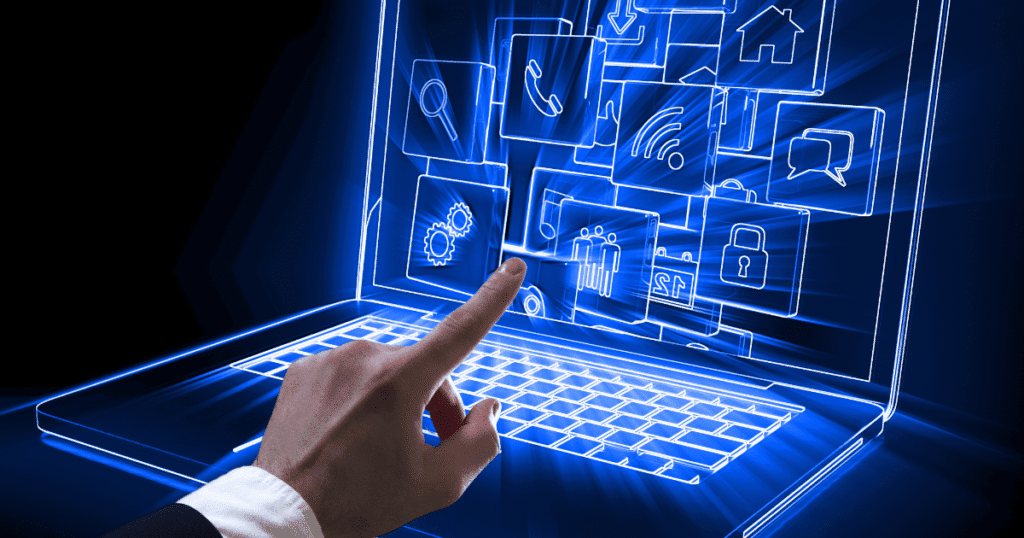The Internet of Things is changing the very way humans interact with devices, data, and the world around them. Smart homes that become more dependent on industrial automation, healthcare monitoring, and agriculture are growing and becoming crucially important. Efficient IoT software design and secure implementations are at the center of nearly all successful installations.
This complete guide can help harmonize developers, startups, and enterprises with the essential tools, key trends, and best practices for Internet of Things Software Development to build trendy and robust, scalable solutions.
What Is IoT Software Development?
IoT software development involves applications and services to collect, process, and exchange data over the Internet. It allows physical devices to be connected to sensors and actuators with those connectivity components, usually based on hardware and software, seeking a seamless end-to-end solution.
Typical components of complete IoT solutions include:
Devices and sensors (collect data), Connectivity modules (Wi-Fi, Bluetooth, LoRaWAN, 5G), Edge computing (processing on-device), Cloud services (data storage, analytics, orchestration), User-facing applications (mobile apps, dashboards)
Principal Components IoT Software Development
Before going to the tools and trends, let us spare some time to define the core building blocks that lie in the IoT software stack:
- Firmware Development: That is the code that runs on the hardware, usually in C/C++ or Rust.
- Intermediary software: It connects devices with the cloud for the management of devices and communication between devices.
- Cloud Back-End: Built with platforms as AWS, Azure, or Google Cloud, all free to store, process, and analyze data.
- User Interface: The web and mobile applications through which end users interact with the IoT systems.
Trending Tools for Internet of Things Software Development
Here are the most popular tools and platforms for IoT software development:
1. Arduino and Raspberry Pi
- Ideal for prototyping and educational purposes.
- Open-source system, big community support.
- Compatible with many sensors, actuators, and communication modules.
2. PlatformIO
- Integrated development environment for embedded systems.
- Supports numerous boards, libraries, and debugging tools.
- Known to most developers building firmware for ESP32, STM32, and Arduino.
3. AWS IoT Core
- A complete managed platform by Amazon.
- Has device registry, MQTT messaging, and secure routing for data.
- Great integration with other AWS services such as Lambda, S3, and DynamoDB.
4. Google Cloud IoT
- Scalable solutions for device management and data analytics.
- Allows secured provisioning and execution of commands on devices.
- Well-suited for AI and machine learning integrations.
5. Microsoft Azure IoT Hub
- Enterprise-grade platform having comprehensive cloud capabilities.
- It allows device telemetry, twin modeling, and edge computing.
- Applicable in the smart industry, logistics, and energy use cases.
6. Node-RED
This is a visual programming tool for wiring together hardware devices, APIs, and online services. Rapid prototyping and data routing. Open-source and extremely customizable.
7. Eclipse IoT
An open-source ecosystem formed by different projects like Eclipse Kura and Eclipse Hono. Very suitable for industrial-grade IoT solutions. Support for MQTT, CoAP, and other standard protocols.
IoT Software Development – Key Trends
The IoT ecosystem is evolving rapidly. Some key trends driving the IoT software development have been alluded to below.
1. Edge Computing
- Reduced latency because of data processing done either on-device or on a local network.
- Edge is also good for applications that demand immediate action, whether in autonomous vehicles or factory floor machinery.
- Less dependency on cloud, less bandwidth utilization.
2. Artificial Intelligence and Machine Learning Integration
- Enabling predictive maintenance, real-time analytics, and anomaly detection.
- Applicable for smart cities, health diagnostics, and manufacturing.
3. 5G Connectivity
- Ultra-low latency and high data transfer rates are provided.
- Best suited for IoT applications demanding real-time communication (e.g., remote surgery, autonomous drones).
4. Security by Design
- Focusing on key issues like encryption, secure boot, device authentication, and OTA (Over-The-Air) updates.
- Increasingly important with the rise in attacks based on IoT.
5. Interoperability Standards
- Protocols such as MQTT, CoAP, and LwM2M are gaining acceptance.
- Open-source frameworks (Matter for smart homes, e.g.) are trying to achieve cross-device interoperability.
6. Sustainable IoT
- Processes that consume less fuel: power-efficient firmware and edge processing.
- More battery-less gadgets now have power harvesting capabilities.
IoT Software Development Best Practices
Following the best development practices in the industry will enable the development of robust, secure, and scalable IoT solutions.
1. Always Start with a Clear Use Case
- Define clearly the problem, what the end product needs to achieve, and how IoT fits into the picture as a solution.
- Avoid unnecessary feature-creep and complications.
2. Selection of the Right Protocols
- Most commonly used lightweight protocols are MQTT for telemetry; CoAP is recommended for constrained devices.
- Ensure the selected protocol is supported by your cloud backend and your devices.
3. Security Considerations from the Very Beginning
- Deploy TLS/SSL encryption, secure booting, and multi-factor authentication.
- No, we keep on developing OTA updates to deploy patches for vulnerabilities discovered in the field.
4. Design for Scalability
- Utilize cloud services that accommodate thousands of devices and a massive flow of data simultaneously.
- Utilize message queuing systems as well as microservices to help enforce an efficient flow of data.
5. Test a Lot
- Test under various connectivity conditions, battery levels, and data loads.
- Simulate attacks of different kinds to test resilience against arbitrary faults and failures.
6. Modular Architecture
- Develop reusable software modules for easy maintenance and quick development.
- Decouple firmware from cloud logic to enable flexible solutions.
7. Focus on Energy Efficiency
- Celebrate Usage cessation programming or action path toward optimization, consumption method mitigation.
- Make energy-efficient selections in chips and protocols.
Real-World Applications of IoT Software
Smart Homes
- Automated devices in the house: smart thermostats, lights, locks,
- Integration with voice assistant apps and mobile apps.
Healthcare
- Wearables that monitor heart rate, oxygen level, etc.
- Remote patient monitoring and emergency alerts.
Industrial IoT (IIoT)
- Factories with sensors are monitoring machine performance.
- Predictive maintenance reduces downtime and costs.
Agricultural Development
- Smart irrigation systems and soil monitoring.
- Drone surveillance and crop analysis.
Logistics and Transportation
- Fleet tracking systems with real-time data.
- Smart traffic systems and autonomous delivery vehicles.

Challenges in IoT Software Development
1. Device Diversity
- Different chipsets, sensors, and operating systems,
- Increases software compatibility/differences that create complexities in application updates.
2. Connectivity Issues
- Stability of either the Internet or cellular connection is key.
- Offline functionality is needed for areas with low network coverage.
3. Security Vulnerabilities
- Devices remain the weakest link in network security most of the time.
- Remote patching or upgrading remains a challenge most of the time without an OTA mechanism.
4. Scalability
- Thousands or millions of devices would have to be managed simultaneously.
- A strongly constructed backend architecture and monitoring tools are prerequisites.
5. Power Constraints
- Most IoT devices are battery-powered.
- And they need to have their software written with the highest degree of optimization for energy efficiency.
Conclusion
Software development for the IoT is a fundamental multidisciplinary activity involving hardware engineering, embedded programming, cloud architecture, and user experience design. As industries continue to evolve with practical threats growing ever larger, there will be a pressing demand to deliver scalable, secure, and energy-efficient solutions.
Using appropriate tools, following news trends, and applying the best development practices would allow developers and organizations to construct next-generation IoT solutions that would be technically relevant, practically useful, and sustainable through the onset of time.
FAQ: Internet of Things Software Development
Must-haves in programming languages for IoT software development?
The most popular programming languages are C/C++ for embedded systems, Python for data processing and scripting, JavaScript, and Node.js for server and UI, and Java/Kotlin/Swift for mobile applications.
Is the cloud necessary in IoT development?
Not essentially. When the cloud helps out in terms of scalability and storage, edge computing allows processing in real-time on the device or at a nearby gateway, thus minimizing perceived latency and dependence on the internet.
How do I secure my IoT project?
Incorporate encryption, secure authentication, and OTA updates. Select hardware that features secure capabilities, such as Trusted Platform Module (TPM) or Secure Elements.
Can I build an IoT system without programming knowledge?
While some very low-code development can be done using platforms like Node-RED, for gaining extended functionality, some programming knowledge in embedded systems and cloud infrastructure would be required.



